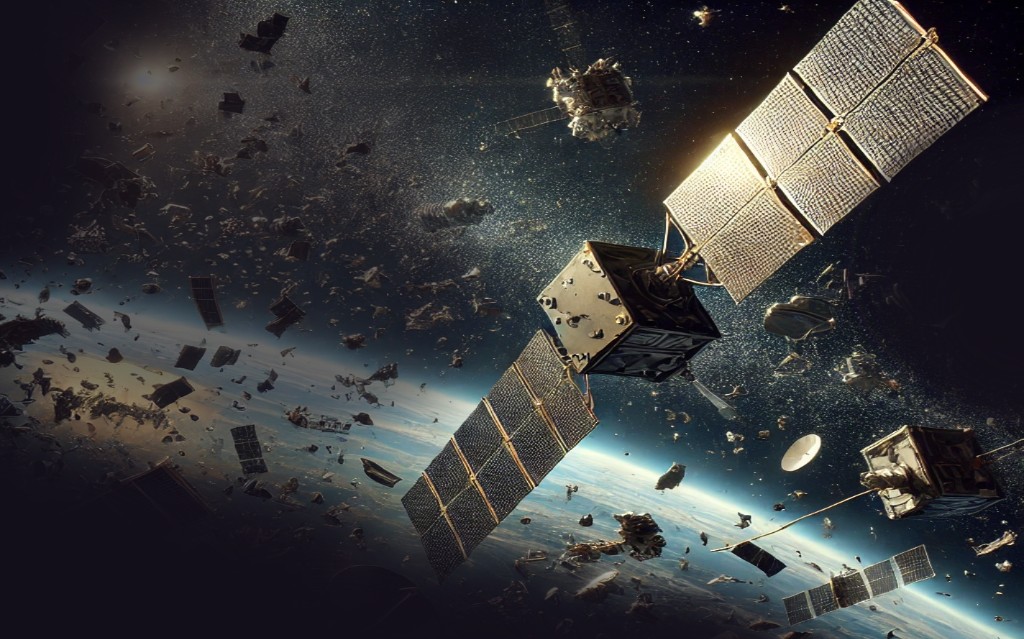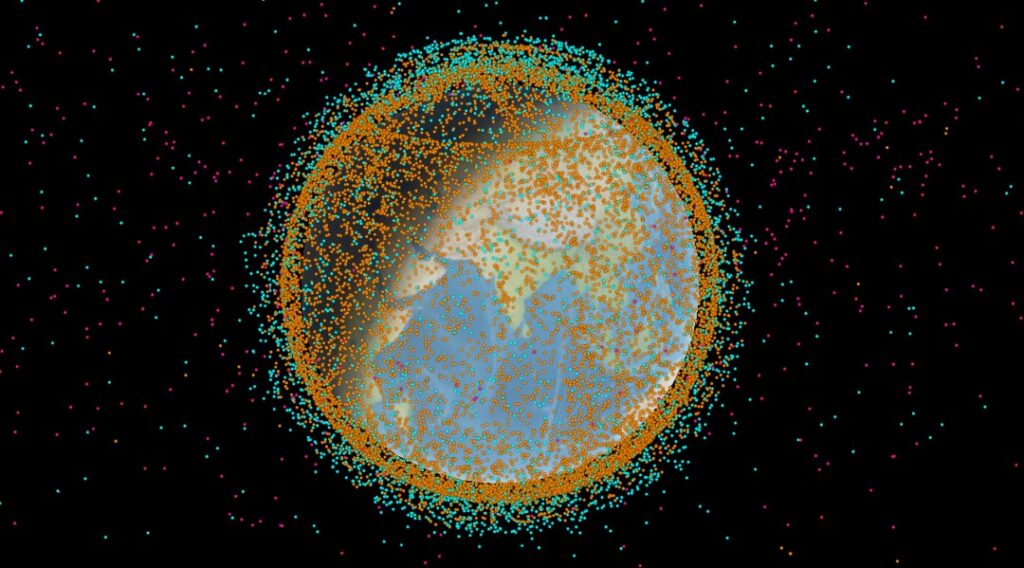…and Its Impact on IoT Satellite Operations
The rapid expansion of satellite-based Internet of Things (IoT) connectivity has revolutionised industries ranging from agriculture and logistics to smart cities and environmental monitoring. However, the proliferation of satellites in low Earth orbit (LEO) has brought a growing challenge: space debris. This issue poses significant risks to the commercial operation of satellites and the sustainability of the LEO environment.

The Growing Threat of Space Debris in LEO
LEO, extending up to 2,000 kilometers above Earth’s surface, is a prime zone for IoT satellite constellations due to its low latency and reduced energy requirements for satellite deployment. However, it is also the most congested region of space, with an estimated 36,500 objects larger than 10 cm and millions of smaller fragments orbiting the Earth. These debris objects originate from sources such as defunct satellites, spent rocket stages, and fragmentation events caused by collisions or explosions.
The growing density of debris increases the likelihood of collisions, creating even more debris in a self-reinforcing cycle known as the Kessler Syndrome. For commercial operators deploying IoT satellite constellations, this escalating threat translates to higher risks and operational challenges.
Risks to IoT Satellite Operations
Collision Risks
IoT satellite constellations, such as those deployed by companies like SpaceX, Amazon, and Swarm, often involve hundreds or thousands of small satellites. The sheer number of satellites in LEO multiplies the probability of collision with debris. Even tiny fragments, traveling at speeds of up to 28,000 kilometers per hour, can severely damage or destroy satellites.
Operational Interruptions
To avoid collisions, satellites must perform costly and complex maneuvers. These maneuvers consume fuel, reducing the operational lifespan of satellites and increasing maintenance costs. For IoT systems reliant on continuous global connectivity, interruptions caused by collision avoidance measures can disrupt service reliability.
Cost Implications
Space debris raises the cost of satellite insurance and increases the financial burden of building satellites with advanced shielding or redundant systems. These added expenses could make IoT connectivity less economically viable, particularly for smaller operators.
Legal and Regulatory Challenges
As debris proliferates, regulators may impose stricter licensing requirements on satellite operators, including mandatory end-of-life deorbiting plans or active debris removal commitments. Compliance with these regulations can add further costs and complexity to IoT satellite deployments.

Satellites can be tracked at this wonderful resource
Image source: http://astria.tacc.utexas.edu/AstriaGraph/
Mitigation and Solutions
The space industry is actively developing strategies to manage the risks posed by debris. Key approaches include:
- Design Innovations
IoT satellite manufacturers are incorporating features like autonomous collision-avoidance systems and propulsion systems designed for safe deorbiting at the end of a satellite’s life. Lightweight shielding is also being developed to minimize damage from smaller debris. - Tracking and Monitoring
Advances in space situational awareness (SSA) enable better tracking of debris. Organizations like the U.S. Space Command and private companies such as LeoLabs provide data that helps operators predict and prevent potential collisions. - Debris Removal Technologies
Several experimental technologies aim to remove debris from orbit. Examples include nets, harpoons, and even lasers designed to nudge debris into a trajectory where it burns up in the atmosphere. These technologies, while promising, are still in development and face challenges related to cost and scalability. - International Collaboration
Effective mitigation requires global cooperation. Initiatives like the United Nations’ Committee on the Peaceful Uses of Outer Space (COPUOS) and the Space Sustainability Rating (SSR) encourage responsible behavior among satellite operators.
Implications for the IoT Industry
IoT satellite operators must prioritize debris mitigation to ensure sustainable operations in LEO. Companies deploying IoT constellations should:
- Integrate debris mitigation plans into mission designs to meet regulatory requirements and avoid penalties.
- Invest in partnerships with SSA providers to enhance debris tracking and collision avoidance capabilities.
- Advocate for global standards to ensure equitable sharing of the costs and responsibilities of debris mitigation.
Despite these challenges, the IoT sector remains poised for growth. By addressing the issue of space debris proactively, commercial operators can minimize risks while expanding the reach of IoT connectivity worldwide.
Conclusion
The expansion of IoT satellite networks in LEO brings immense potential for economic and technological advancement. However, the increasing volume of space debris represents a critical challenge. Through innovation, collaboration, and adherence to sustainable practices, the IoT satellite industry can mitigate these risks and continue to thrive in the increasingly crowded environment of low Earth orbit.